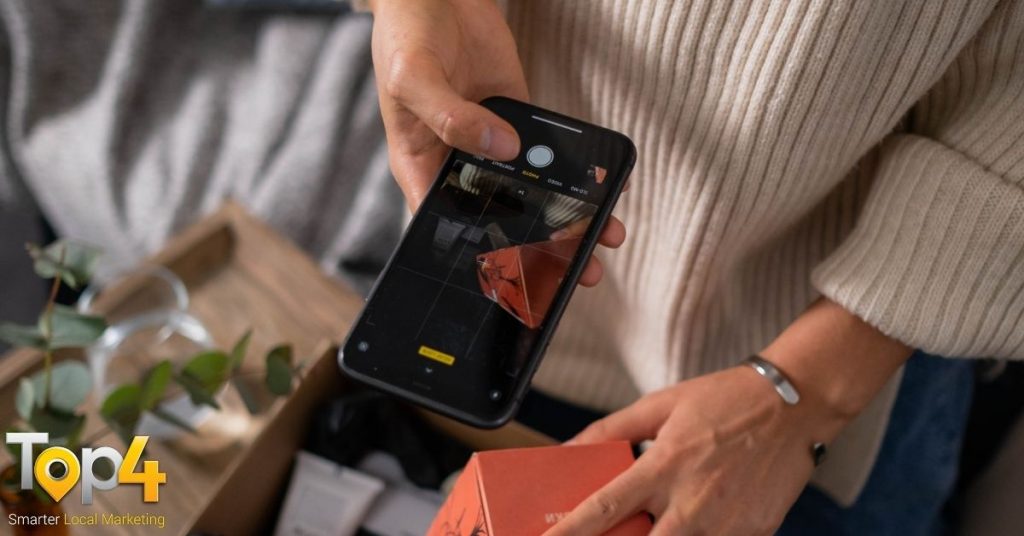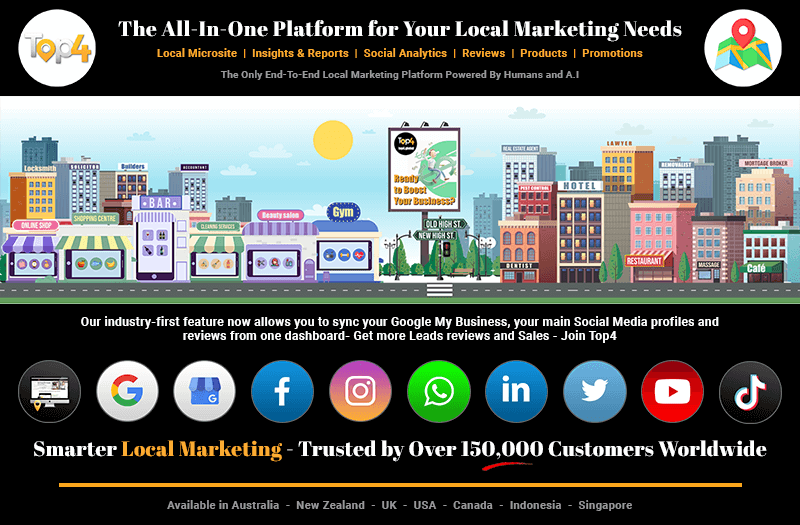Marketers often struggle to develop content that is effective to drive results. Creating attractive content is both an art and a science. It’s more than just sharing relevant information with your readers — you’ve got to catch and keep their interest as well. And on top of that, you must ensure posts are targeting relevant keywords so they’re optimised for search engines too.
Too many businesses get overwhelmed and churn out uninteresting blog content based on random search terms. You’ll need a mix of content types in your strategy to create a relationship with your audience genuinely. This post will cover the Top4 content types that can help you drive more traffic, leads and sales organically. Before we dive in, let’s examine why content creation is a must-have for businesses in 2022.
The importance of creating compelling content
Every business should develop compelling, optimised content aimed towards potential customers by 2022. More than 80% of B2B businesses and 73% of B2C businesses already have a content marketing strategy. But if you don’t, it can be hard to get started. How can you create something that your customers want to read? What format should it be in? How can you reach customers with it? You should consider all these questions when attempting to make effective content.

Effective content will follow these requirements:
- Engage your potential customers
- Provide them with information about your products or services
- Increase brand visibility, conversions or sales
Creating the right content is the foundation of a successful demand development plan. Your target audience will find and discover your business if you optimise your content and post it on the correct channels. Top-of-funnel content attracts new customers to your business without the need to pay for targeted ad campaigns. That brings us to the measurable benefits of content marketing today. In fact, 80% of companies drove increased brand awareness in 2021 using content marketing. It also helped companies build trust, educate their audiences, nurture leads and generate more demand.
You can promote fresh content across all of your digital marketing channels, including
- Other web pages and a business blog
- Social media platforms (Facebook, Twitter and LinkedIn)
- Apps
- Lists of email addresses
- Web push notifications
The higher the quality of your content, the better the results of your campaigns will be. Compelling content is the foundation of a sound demand generation strategy but you need to focus on the right kind of content. Let’s explore the Top4 different content types we believe every company should have.
4 content types you must use right now
When you first start creating content, it might be overwhelming. You could feel as if you don’t know where to begin since you have so much to say. Worse, you might not know what your target market is looking for. With your initial content strategy, focus on the types of content that you see successful competitors using. Then, assess what is resonating with your audience. The four most effective content types are short-form, long-form, interactive content, video and audio.
1. Short-form content

People frequently think of blog posts when they think of the content. One of the simplest and most common sorts of content is blog posts. A blog post is typically a lighthearted article with accompanying photos (and occasionally a video). If you want a blog post to appear high up on search engine results pages (SERPs), you must do your keyword research and optimise it. Once you get going, you can also invite noteworthy influencers and bloggers to write guest posts. Featuring experts can boost your credibility and expose the influencer’s audience to your brand. Give your writers checklists, templates, brand guidelines and examples of your best posts to keep your writers on brand.
– Getting ready to write
Fortunately, writing engaging and useful blog content doesn’t take much time. A blog post can instantly generate visitors and sales to your business with the appropriate strategy. Always choose a focus term before you start writing. It’s the core topic that a blog post should cover and the search phrase you will focus on for your optimisation. If you have no clue how to write for search engines, the software can help. You can tailor blog posts to focus keywords with search engine optimisation (SEO) software like Clearscope, Ahrefs or MarketMuse. They will guide your writing process to help you outcompete existing SERP content.
– Tips for how to write a successful blog post
Next, make a list of the topics you want to cover. Subheaders might help you divide your blog into sections. These secondary headings, known as H2s and H3s, are part of what search engines look for when scanning your content. Use your focus keyword in some of these H2s. Most blog posts should be between 1,500 and 2,000 words. Of course, this is not a universal rule. Some can be shorter or longer.
A word count of 1,500 words or more, on the other hand, is usually sufficient to convey useful information to your audience. Relevant advice that works is only a part of the equation. As you write, talk directly to your reader and don’t hide your humour or personality. That will make the blog feel more personal, helping you build relationships with your readers.
– Finalising your blog article
Finally, you should include multimedia or visuals in your post. To make the post more engaging, have video clips, GIFs, photos, screenshots, infographics and more. While the bulk of the position should be a copy, you still want to add a few elements to engage the reader and keep them on the page. Just take a look at this blog post. We use graphs, diagrams and screenshots to back up our points and help you create better content.
However, the blog post isn’t yet complete. You must still include elements that contribute to the generation of long-term demand. It could be an email capture form or a call-to-action (CTA) to download or join up for a free trial. Suppose your customers find the blog post via a search engine or a social media post. In that case, you want to capture their information to remarket to them in the future. CTAs are a critical component of your content marketing strategy. They turn a blog post from just a piece of content into a lead-building tool that attracts subscribers on autopilot.
2. Long-form content
Short-form content, such as blog posts, does not necessarily dominate in a Google search. Long-form content differs from short-form content in terms of both length and depth. Long-form content includes guides, reports and whitepapers that a prospective customer can download. These content types go far beyond the scope of a standard blog post. They provide actionable, prescriptive directions and insights into a crucial topic.
Long-form content is a great way for businesses to generate leads and increase sign-ups. Let’s look at the different types of long-form content and their advantages.
– Ebooks and reports
Reports are long-form content pieces with numerous data pages compressed into a PDF or interactive viewer. Reports highlight specific insights about a particular topic, often sourced from the company’s own research and data. This type of content is crucial for positioning your company as a thought leader.
– Guides
Guides are similar to reports in that they are multi-page documents with useful instructions and data. Unlike reports, though, guides often provide step-by-step process documentation so the reader can replicate a tactic or strategy for their business.
– Whitepapers
Whitepapers are a hybrid of guides and reports that condense information into a one- or two-page briefing. Whitepapers are very targeted and typically involve the company sharing its perspective on the topic.
3. Content that is interactive

Content must occasionally be more engaging to hold the reader’s attention. This is where interactive content comes into play. By making your content more engaging, you can extend customers’ time interacting with your brand. Interactive content can boost your SEO rankings by increasing your website’s dwell time (how long someone spends on a page). It’s a crucial part of an effective SEO strategy. Some popular types of interactive content include data visualisations, free apps, virtual events, webinars, and more.
– Visualisations of data
It’s great to display useful data in a memorable way if your business collects it. According to MVP, the average social brand worth of the NHL season was highlighted by the team’s performance, a social sponsorship valuation business. To do so, it hosted an interactive data visualisation on its website that allows users to hover over and interact with the dataset.
Your audience will be more interested and active on your site if you use interactive content. Not only does that send strong SEO signals to Google, but it also increases your chance of landing a sale. You can also build stronger relationships with your audience by interacting live.
– Webinars and virtual events
Host a virtual event or a webinar to get your potential customers together. There is one fundamental difference between these content assets and interactive experiences. In a virtual event, you need to show up while the event is live. A webinar invites you to do the same, but a recording is often available later. Virtual events were the type of content that delivered the best results for B2B marketers in 2021.
4. Content in the form of video and audio

– video content
Customers’ attention spans aren’t always long enough to read lengthy-form content. As a result, making educational videos is another approach to communicate with your audience. Videos are also the perfect form of content to embed on a landing page. Why? Video content can increase conversions. In fact, over 84% of people have purchased an item after watching a video about it.
Videos come in a variety of formats. These are some of them:
- Explanatory video: a video that walks you through the benefits of your product or service.
- Demonstration video: A step-by-step demonstration of the product’s functionality.
- Brand video: Showcasing the company’s vision and mission
- Tutorial video: Walking through a specific use case on how to do a unique task
- Review video: Highlight a customer’s success story, case study, or endorsement
- Talking head spokesperson video: Walking a customer through your company’s product/services and their benefits
You can make the video from the format above and tag some relevant keywords. Consumers actively searching for related terms will see the movie and learn about your business if you tag it with relevant keywords on YouTube or Vimeo or post it on an optimised page on your site. With the right video, you can share valuable information about your company with a captivated audience. If you need help with high-quality video production, our team can help.
– Audio content
Is it common for your target audience to spend a significant amount of time listening to content? If this is the case, audio content may be necessary. A podcast is the standard approach. You can release pre-recorded podcast episodes on your site, Spotify, Apple Podcasts and other networks. A podcast is a great way to capitalise on the shifting media habits of your consumers. In 2021, more than 57% of Americans (a 2% increase from last year) subscribed to at least one podcast.

Podcasts allow you to communicate with your listeners while they are on the go. Podcasting is much easier to get started with than video because you need a good microphone. Your podcast doesn’t have to be spectacular. Instead, you can keep it simple and drill down on the conversations.
Customers actively searching for related terms will see the movie and learn about your business if you tag it with relevant keywords on YouTube or Vimeo or post it on an optimised page on your site.
Decide what you want to say and start recording. Then, based on audience response, you can iterate until you find a formula that works. If you want to experiment beyond podcasts, it’s also easy to start streaming radio digitally.
Final takeaways
For your content strategy, it’s critical to invest in the correct content categories. Two common mistakes businesses make include focusing too much effort on the wrong type of content for their audience or failing to diversify their content library. With a variety of different types of content published on your owned channels, you’ll be able to reach your audience in a handful of different, effective ways.
If you’re not sure how to do this, don’t worry. Our skilled content marketing strategists will create custom content that engages your readers, ranks your content at the top of search engine results and drives results for your business. Our content marketing agency offers content including blog posts, guides, infographics, videos, website copy, case studies, email newsletters, slideshares, long-form content and more! Our content marketing strategists include experienced copywriters, SEO experts, graphic designers, videographers, animators, content marketers, social media strategists, among others. Pairing content marketing strategy with other digital marketing strategies like search engine optimisation, social media marketing, email marketing and others will allow you to reach your most qualified customers with keyword-based content.
Ready to optimise your content with our content marketing agency? Get in touch today and our content strategists will walk you through how we can help you develop an authoritative presence online through content.
To find out how we can help you with your Website + Marketing, using our unique location marketing platform called Top4, get in touch today at www.top4marketing.com

Looking to build customer loyalty through social media? Don’t forget to add your business to Top4.global
List your business, create your own digital store to sell goods and services, and share posts on social media. Promote your business on Google instantly! Should you need help with local digital marketing then view our new Google Marketing Platform and services Top4 Marketing
Get Found On Google Promote Your Website, Reach local customers today!
Our Digital Marketing Agency Services Across All Industries Include Search Engine Optimisation (SEO), Google Marketing, Website Design, Corporate Web Development, and local location-based marketing using our own Google Marketing Platform!
Engage A Social Media Agency For Only 1/3 The Cost Of Employing A Social Media Manager…LET’S TALK!




